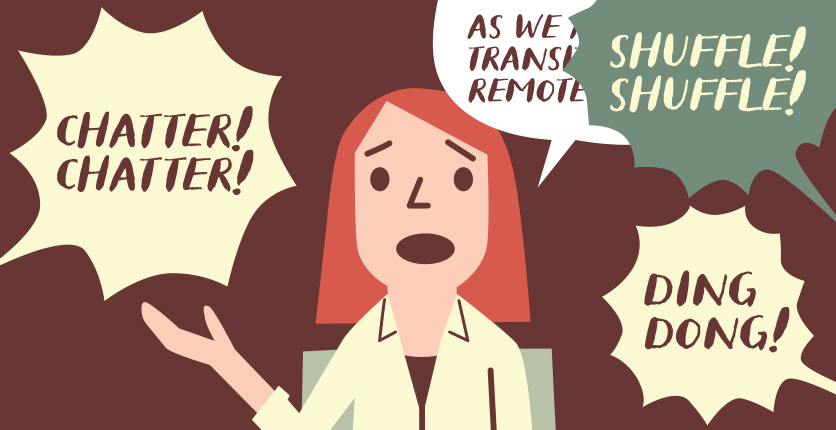As the workplace shifts from office to home, and more employees make the transition to working remotely, video-conferencing becomes increasingly common. Thus, in this new milieu of social distancing, where the line between personal and professional lives blur, understanding video-conferencing etiquette is important.
Indeed video-conferences are vastly different from face-to-face meetings, particularly for those navigating the digital workplace. Here are some dos and don’ts to make sure that each virtual meeting would be a productive affair.

Set Up Your Space
Make sure your workspace is tidy before switching on your webcam. This means ensuring that there is no clutter on your desk and that any decoration on the wall is work-suitable. In the event that you do not have time to tidy up, create a virtual background on the webcam. Many video-conferencing programmes let you add this to create a professional-looking virtual-teleconferencing room.
Another tip is to ensure that you position the camera at eye level to facilitate a clear and unobstructed view of yourself during the session. Cameras that are positioned too high or low are not just distracting but unflattering.
Lighting is another important consideration – dimly lit backgrounds are distracting for other participants who might struggle to see you. Ensure that your room is well lit and, whenever possible, opt for natural light from the front or side. Avoid having a bright light shining from behind you, as the video participants will only end up seeing your silhouette.

Mute Your Microphone When Not Talking
When it is not their turn to speak, people often forget to mute their microphone during a teleconference call. This can result in unnecessary ambient noise, which can be distracting and stifles the meeting. Always test your microphone before commencing your video call. Most video-conferencing applications will allow you to do a test of your microphone and webcam functions in advance.
Ideally, turn off all notification alerts to prevent noise distractions to the other participants of the video call.

Signal When You Want To Speak
At a face-to-face meeting, it’s easy to know when it is your turn to speak. By contrast, during a videoconferencing call, it’s common to see participants speaking over others due to difficulty in picking up visual cues.
This can be solved by simply raising your hand. Remember to unmute your microphone, and speak clearly and loudly (do not shout), without rushing.

Don’t Dress Sloppily
If you have a video call with business associates, ensure that you adhere to your company’s dress code. While modern-day codes might have relaxed over the years, just because you’re working from home does not mean you can be dressed sloppily. Dress comfortably but appropriately for meetings – pyjamas are a strict no-no.
Tip: Avoid patterns and stripes that can be visually distracting.

Turn On Your Video
Don’t forget to turn on your video camera. Video-conferencing is often preferred to audio-conferencing because it allows you to see the faces of the people with whom you are talking to. This way, you’ll get to see the visual cues of the participants, which facilitate better engagement. Turning off your video might convey the message that you are not fully committed to the meeting. If you need to share your screen with fellow attendees in the video call, remember to close apps and documents that are not relevant to the meeting.

Do Not Multitask
When video-conferencing, you should not be engaged in any other task. Avoid responding to texts and emails or surfing the internet. Multitasking and not being fully engaged make you look unprofessional and reduce the productivity of the videoconferencing session.







